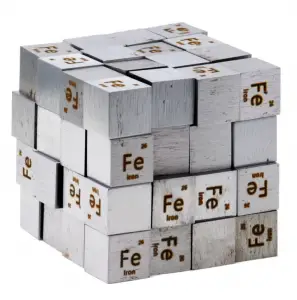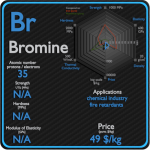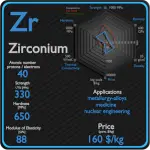This article contains comparison of key thermal and atomic properties of magnesium and iron, two comparable chemical elements from the periodic table. It also contains basic descriptions and applications of both elements. Magnesium vs Iron.

Magnesium and Iron – About Elements


Source: www.luciteria.com
Magnesium and Iron – Applications
Magnesium
Magnesium is the third-most-commonly-used structural metal, following iron and aluminium.[35] The main applications of magnesium are, in order: aluminium alloys, die-casting (alloyed with zinc), removing sulfur in the production of iron and steel, and the production of titanium in the Kroll process. Magnesium alloys are used in a wide variety of structural and nonstructural applications. Structural applications include automotive, industrial, materials-handling, commercial, and aerospace equipment. Magnesium alloys are used for parts that operate at high speeds and thus must be light weight to minimize inertial forces. Commercial applications include hand-held tools, laptops, luggage, and ladders, automobiles (e.g., steering wheels and columns, seat frames, transmission cases). Magnox (alloy), whose name is an abbreviation for “magnesium non-oxidizing”, is 99% magnesium and 1% aluminum, and is used in the cladding of fuel rods in magnox nuclear power reactors.
Iron
Iron is used in numerous sectors such as electronics, manufacturing, automotive, and construction and building. Iron is the most widely used of all the metals, accounting for over 90% of worldwide metal produc0tion. Its low cost and high strength often make it the material of choice material to withstand stress or transmit forces, such as the construction of machinery and machine tools, rails, automobiles, ship hulls, concrete reinforcing bars, and the load-carrying framework of buildings. Since pure iron is quite soft, it is most commonly combined with alloying elements to make steel. Steels are iron–carbon alloys that may contain appreciable concentrations of other alloying elements. Adding a small amount of non-metallic carbon to iron trades its great ductility for the greater strength. Due to its very-high strength, but still substantial toughness, and its ability to be greatly altered by heat treatment, steel is one of the most useful and common ferrous alloy in modern use. There are thousands of alloys that have different compositions and/or heat treatments. The mechanical properties are sensitive to the content of carbon, which is normally less than 1.0 wt%.
Magnesium and Iron – Comparison in Table
| Element | Magnesium | Iron |
| Density | 1.738 g/cm3 | 7.874 g/cm3 |
| Ultimate Tensile Strength | 200 MPa | 540 MPa |
| Yield Strength | N/A | 50 MPa |
| Young’s Modulus of Elasticity | 45 GPa | 211 GPa |
| Mohs Scale | 2.5 | 4.5 |
| Brinell Hardness | 260 MPa | 490 MPa |
| Vickers Hardness | N/A | 608 MPa |
| Melting Point | 649 °C | 1538 °C |
| Boiling Point | 1090 °C | 2861 °C |
| Thermal Conductivity | 156 W/mK | 80.2 W/mK |
| Thermal Expansion Coefficient | 24.8 µm/mK | 11.8 µm/mK |
| Specific Heat | 1.02 J/g K | 0.44 J/g K |
| Heat of Fusion | 8.954 kJ/mol | 13.8 kJ/mol |
| Heat of Vaporization | 127.4 kJ/mol | 349.6 kJ/mol |




















